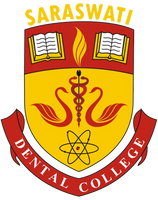
We all know that orthodontic tooth movement is a complex process which involves the activation of different cells in periodontium. Every cell after being stimulated release different types of substances, some are specific to cells while other are common in all cells. After the activation of fixed orthodontic appliances, the inflammation of the cells occurs which releases cytokines; the cytokines which act as a biomarker in OTM are IL-1β, TNF etc.
To activate the cells for OTM i.e., Osteoblasts, Osteoclasts, Fibroblasts & other endothelial cells, they need some stimulation substances, these substances might be protein, enzymes, growth factors or bio mediators. The release of these substances can activate the respected cells and leads to an OTM.
Cells of the osteoblasts lineage are not only involved in bone formation, but also regulate osteoblast formation, activation and survival. This regulation is indirectly mediated by receptor activator of nuclear factor kappa B ligand (RANKL), a member of the tumor necrosis factor (TNF) superfamily.
RANKL is produced by osteoblast lineage cells, periodontal ligament cells, and by T lymphocytes. RANKL binds to a receptor called RANK, which is located on the surface of osteoclasts and osteoclast precursors. The binding of RANKL to RANK induces osteoclast genesis, activates mature osteoclasts, mediates their attachment to bone, promote their survival. The activity of RANKL is controlled by a soluble decoy receptor called Osteoprotegerin (OPG), which binds to RANK and inhibits osteoclast formation, activation and survival.
Suitable biomarkers may be used to characterize the sequence of events following OTM. Evaluation of amount and rate of synthesis of biomarkers in periodontium may be helpful to assess the biological mechanisms which control shift of stimulus from continuous force application to reaction and displacement of teeth in periodontal space. This knowledge of the ongoing force occurring in periodontal tissue during orthodontics and orthopaedic therapies in turn may help us to make proper choice of mechanical loading and shorten the period of treatment.


No Any Replies to “BIOMARKERS IN ORTHODONTICS”
Leave a Reply